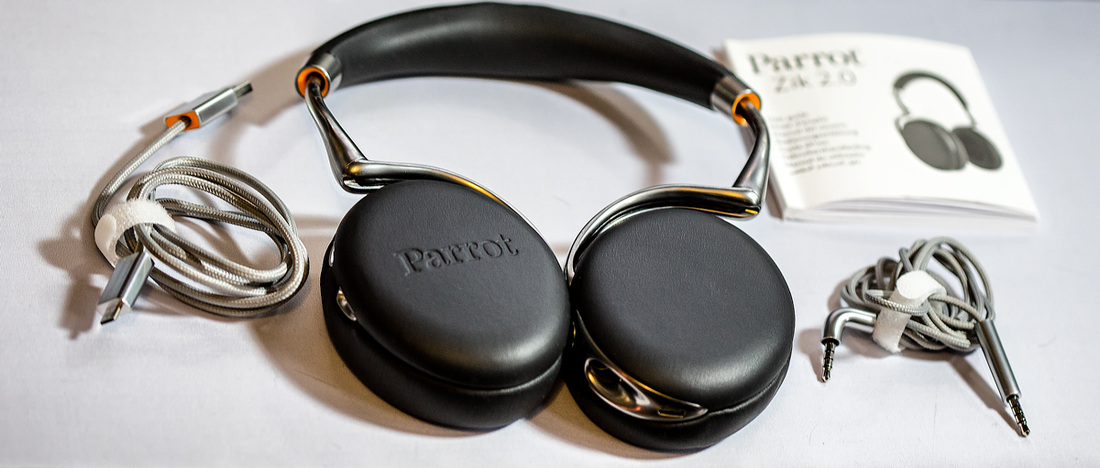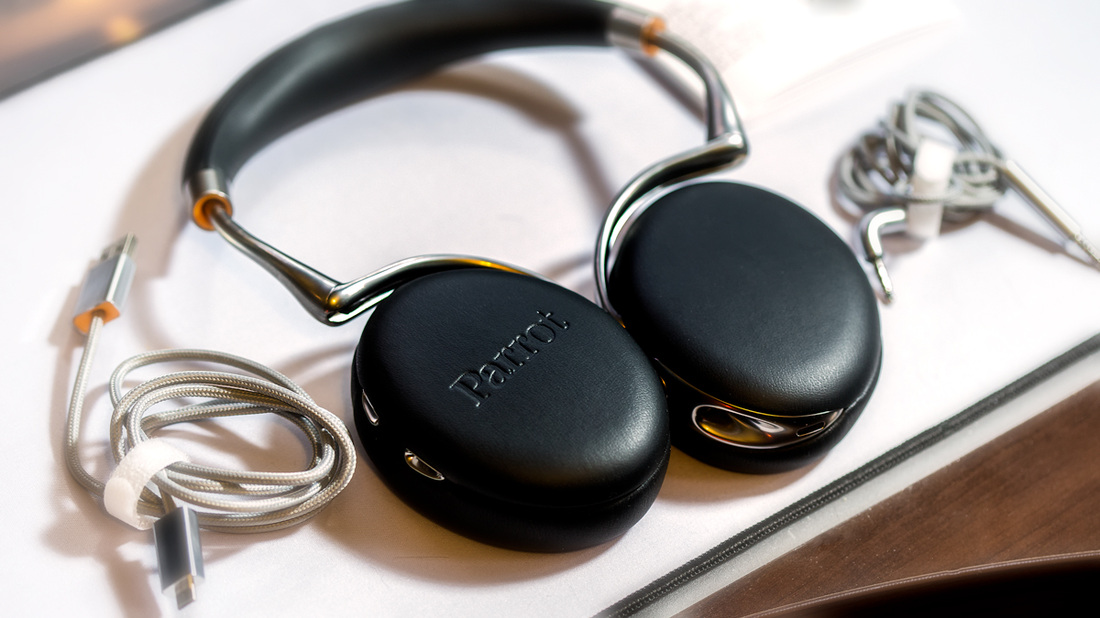Design
Note: I get paid commissions for purchases made through any links to Amazon products in this post.
Compared to my regular (non-Bluetooth) headphones, these headphones are fairly light at 9.52oz. Although they aren’t the lightest pair of Bluetooth headphones you can find, personally, I wouldn’t have minded a little more weight if the earphones could have more room for extending the ear cups. They have 4 settings and I have them fully extended. I would prefer the pads to be just a bit wider, as well. However, trade offs have to be made for weight, and I am tall and probably have a larger head and ears than an average sized person. However, I would suggest trying them on before buying, if possible. Also, while the headphones are comfortable and there is cushioning in the headband, I did feel some pressure on the top of my head after an hour or so of listening. However, I was able to adjust it to a different spot to take pressure off.
The App
Once I had it paired to my iPhone, I launched the Parrot Zik 2.0 app. You have to sign in to use it, which I don’t like, but I wanted to use it, so I signed in with one of my accounts. Once you are into the app, you have three main controls: “Noise Control”, “Equalizer”, and “Concert Hall”. Also, the battery percentage you have left is displayed.
The “Noise control” feature is amazing. You can set just how much of the outside world you want in or even turn it off. They have a big circle on the screen and when you tap and drag it in (making the circle smaller), you get less outside noise and as you expand it you let more outside noise in. The choices range from “noise cancelling (max)” to “street mode (max)”.
The “Equalizer” has some presets that contain a range of settings in a circle. You move a curser that looks like a round ball in the center of the circle toward your choices (Pop, Vocal, Cristal, Club, Punchy and Deep) and it changes the sound accordingly. You can also choose “Producer Mode” by clicking on an icon that resembles an analog soundboard in the bottom left corner of the screen. It will allow you to tweak individual audio bands using the “5 bands full parametric equalizer”.
The “Concert Hall” setting allows you to direct the “speaker placement” and expand the sound stage. Personally, I think the “Silent Room” and “Living Room” settings are the only settings I would use with music (although I usually keep this feature off). However, the “Jazz Club” and “Concert Hall” settings may be useful for audio from movies or games.
The app allows you to save any of your presets and you can also sample presets from other users. They have a search function that makes it easy to type in an artist and see if anyone has put together a preset for them. If not, you can also search by genre, popularity, etc. There are “Premium” and “Connoisseur” sections that divide the artist suggestions from user suggestions. I would actually prefer one section for all presets, but I guess they have to give the artists some exposure.
There is also a “flight mode” section that helps you save battery power. Speaking of battery power, it has a pretty wide range depending on the settings you are using. I have been listening for about an hour and a half this morning with the noise cancelling, EQ, and Concert Hall settings on and it still has 76 percent power. I think their 6 hours in normal mode with noise control, Bluetooth, and Concert Hall enabled is accurate. Of course, you can save battery power by turning off features. They say that their Airplay mode with noise control on and listening to music from the jack will give you 18 hours. Parrot also sells their proprietary battery for $29.99 if you need it. Unfortunately, these headphones use Bluetooth 3 technology rather than the newer Bluetooth 4, which would have made them more energy efficient.
The other stuff in the box
The package comes with the headphones, a charging cable, the audio cable, a transport bag, a battery, and instructions. The charging cable uses micro USB, but there is not a power plug included. I hate to go on a rant about this issue, but I still can’t understand why a wall charger isn’t included with devices that need to be charged. That being said, it is the current trend in Bluetooth devices. I also would have preferred a carrying case rather than a pouch. These headphones don’t fold up like most portable headphones and just using a pouch doesn’t seem like enough protection. Parrot sells a $39.99 case, but for the price of the headphones, I wish they had included it in the box.
The Controls
Another cool feature is the way the headphones will pause what you are playing when you remove them from your head. When you are ready to listen again, you simply put them back on your head and the app will start playing automatically. I also did a quick test of the mic. I made a phone call and the person on the other end said that I sounded fine. I did have a bit of an issue hearing myself talking, but I didn’t find that it was a major issue.
Note: I get paid commissions for purchases made through any links to Amazon products in this post.
Final Words
Pros:
Customizable to the extreme
Noise Canceling
Works with standard 3.5mm audio cable when off
Battery can be changed out easily
Multiple Equalizer settings (with the ability to save presets)
Easy to find new presets for artists with search function
Good looking industrial design (in the basic black)
Easy setup
Headphone pauses music when removed
Intuitive Controls
Decent sounding microphone
Access to Siri from headphones
Negatives:
Price is around $400 (as of today)
Bluetooth 3 (newer Bluetooth would have given longer battery power)
Difficult to hear yourself on phone calls
Package did not contain hard carrying case or power plug
Big heads or ears might not work with design


 RSS Feed
RSS Feed